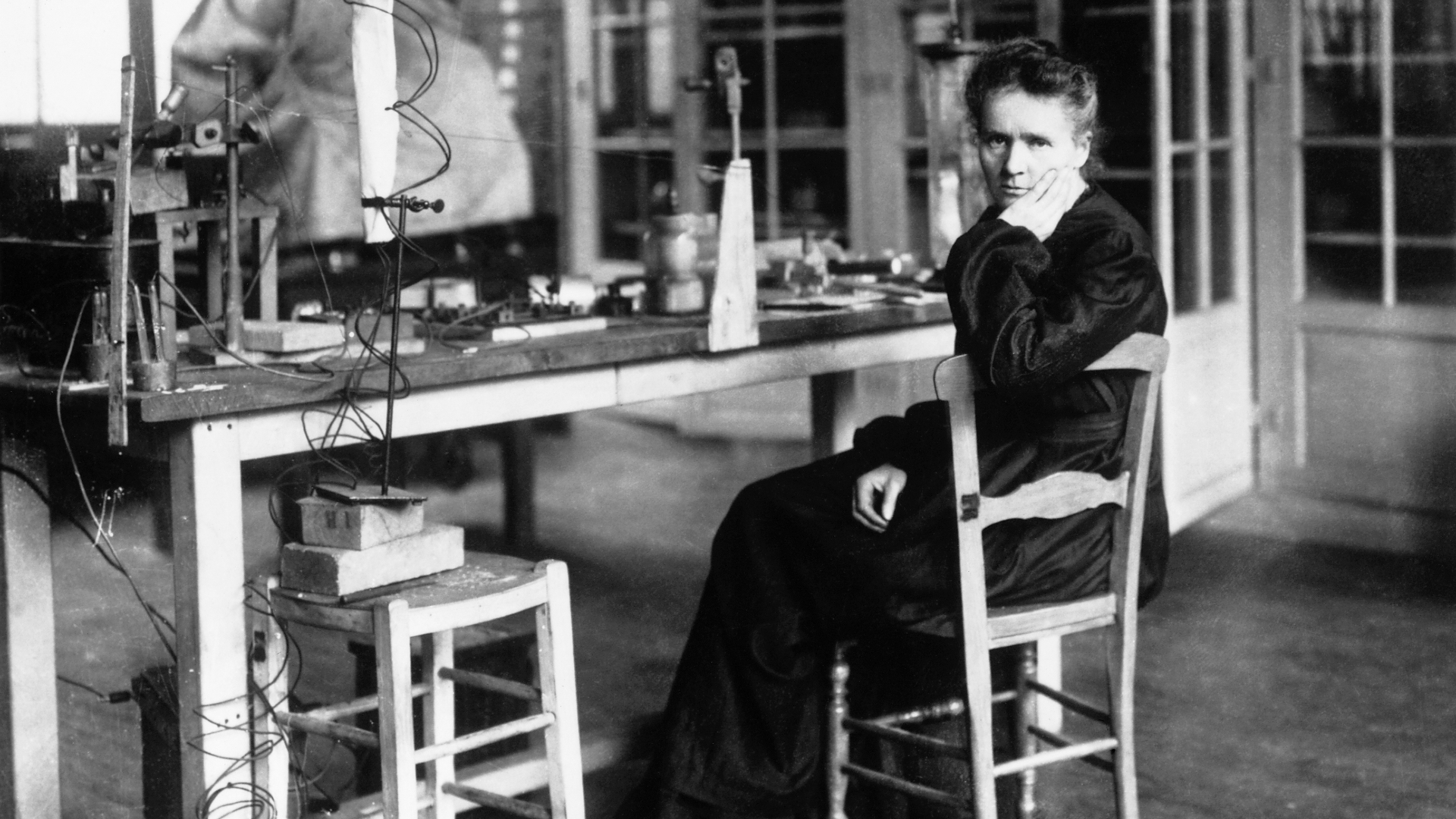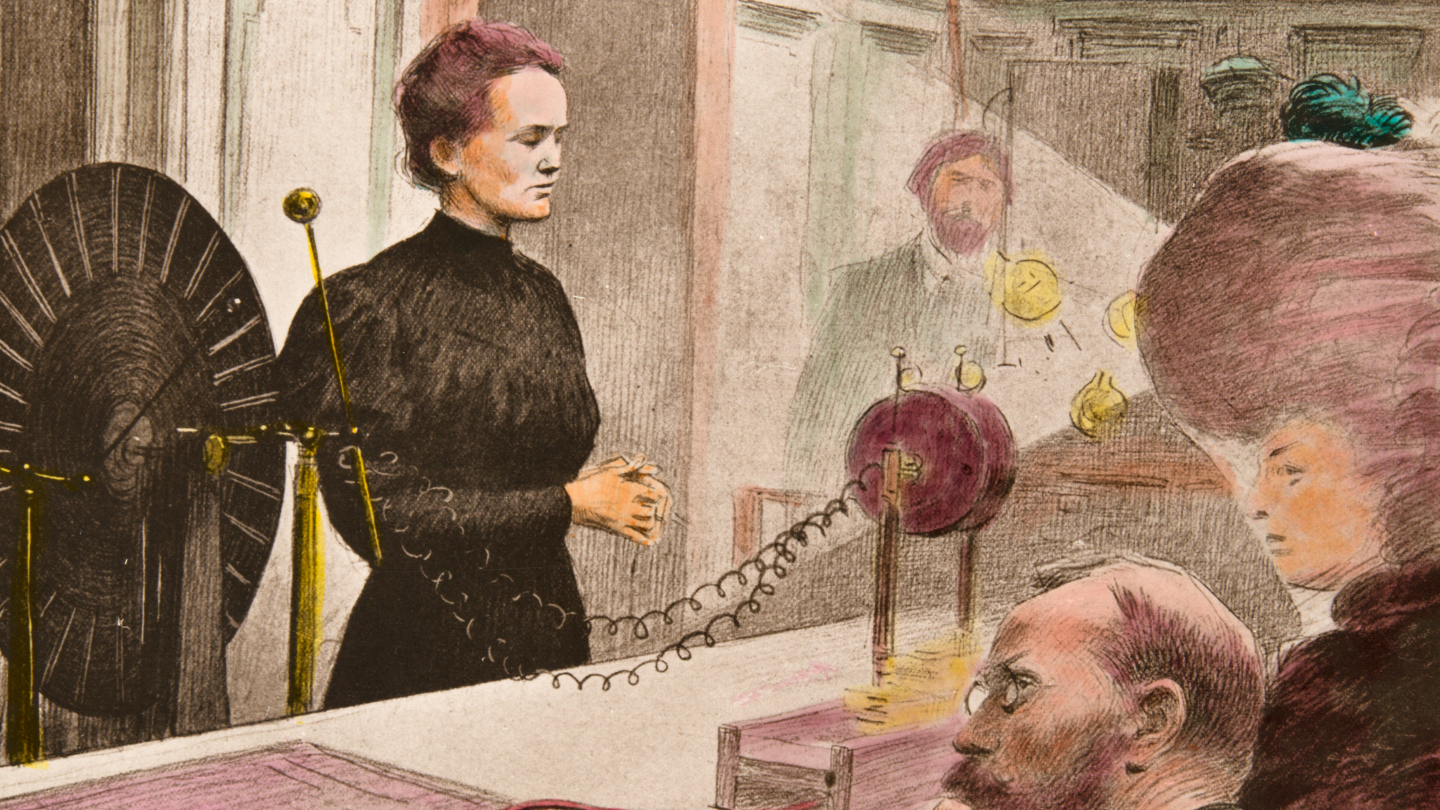Marie Curie: Facts and biography
Marie Curie was a physicist and chemist and a pioneer in the study of radiation.

Marie Curie was a physicist, chemist and pioneer in the study of radiation. She discovered the elements polonium and radium with her husband, Pierre. They were awarded the Nobel Prize in Physics in 1903, along with Henri Becquerel, and Marie received the Nobel Prize in Chemistry in 1911. She worked extensively with radium throughout her lifetime, characterizing its various properties and investigating its therapeutic potential. However, her work with radioactive materials ultimately killed her and he died of a blood disease in 1934.
Early Life
Marie Curie was born Marya (Manya) Salomee Sklodowska on Nov. 7, 1867, in Warsaw, Poland. The youngest of five children, she had three older sisters and a brother. Her parents — father, Wladislaw, and mother, Bronislava — were educators who ensured that their girls were educated as well as their son.
Curie's mother succumbed to tuberculosis in 1878. In Barbara Goldsmith's book "Obsessive Genius: The Inner World of Marie Curie," (W. W. Norton, 2005) she notes that Curie's mother's death had a profound impact on Curie, fueling a life-long battle with depression and shaping her views on religion. Curie would never again "believe in the benevolence of god," Goldsmith wrote.
In 1883, at the age of 15, Curie completed her secondary education, graduating first in her class. Curie and her older sister, Bronya, both wished to pursue a higher education, but the University of Warsaw did not accept women. To get the education they desired, they had to leave the country. At the age of 17, Curie became a governess to help pay for her sister's attendance at medical school in Paris. Curie continued studying on her own and eventually set off for Paris in November 1891.
When Curie registered at the Sorbonne in Paris, she signed her name as "Marie" to seem more French. Curie was a focused and diligent student, and was at the top of her class. In recognition of her talents, she was awarded the Alexandrovitch Scholarship for Polish students studying abroad. The scholarship helped Curie pay for the classes needed to complete her licentiateships, or degrees, in physics and mathematical sciences in 1894.
Meeting Pierre Curie
One of Curie's professors arranged a research grant for her to study the magnetic properties and chemical composition of steel. That research project put her in touch with Pierre Curie, who was also an accomplished researcher. The two were married in the summer of 1895.
Pierre studied the field of crystallography and discovered the piezoelectric effect, which is when electric charges are produced by squeezing, or applying mechanical stress to certain crystals. He also designed several instruments for measuring magnetic fields and electricity.
Get the world’s most fascinating discoveries delivered straight to your inbox.
Radioactive Discoveries
Curie was intrigued by the reports of German physicist Wilhelm Röntgen's discovery of X-rays and by French physicist Henri Becquerel's report of similar "Becquerel rays" emitted by uranium salts. According to Goldsmith, Curie coated one of two metal plates with a thin layer of uranium salts. Then she measured the strength of the rays produced by the uranium using instruments designed by her husband. The instruments detected the faint electrical currents generated when the air between two metal plates was bombarded with uranium rays. She found that uranium compounds also emitted similar rays. In addition, the strength of the rays remained the same, regardless of whether the compounds were in solid or liquid state.
Curie continued to test more uranium compounds. She experimented with a uranium-rich ore called pitchblende and found that even with the uranium removed, pitchblende emitted rays that were stronger than those emitted by pure uranium. She suspected that this suggested the presence of an undiscovered element.
In March 1898, Curie documented her findings in a seminal paper, where she coined the term "radioactivity." Curie made two revolutionary observations in this paper, Goldsmith notes. Curie stated that measuring radioactivity would allow for the discovery of new elements. And, that radioactivity was a property of the atom.
The Curies worked together to examine loads of pitchblende. The couple devised new protocols for separating the pitchblende into its chemical components. Marie Curie often worked late into the night stirring huge cauldrons with an iron rod nearly as tall as she was.
The Curies found that two of the chemical components — one that was similar to bismuth and the other like barium — were radioactive. In July 1898, the Curies published their conclusion: the bismuth-like compound contained a previously undiscovered radioactive element, which they named polonium, after Marie Curie's native country, Poland. By the end of that year, they had isolated a second radioactive element, which they called radium, derived from "radius," the Latin word for rays. In 1902, the Curies announced their success in extracting purified radium.
In June 1903, Marie Curie was the first woman in France to defend her doctoral thesis. In November of that year the Curies, together with Henri Becquerel, were named winners of the Nobel Prize in Physics for their contributions to the understanding of "radiation phenomena." The nominating committee initially objected to including a woman as a Nobel laureate, but Pierre Curie insisted that the original research was his wife's.
In 1906, Pierre Curie died in a tragic accident when he stepped into the street at the same time as a horse-drawn wagon. Marie Curie subsequently filled his faculty position of professor of general physics in the faculty of sciences at the Sorbonne and was the first woman to serve in that role.
In 1911, Marie was awarded a second Nobel Prize in Chemistry for her discovery of the elements polonium and radium. In honor of the 100-year anniversary of her Nobel award, 2011 was declared the "International Year of Chemistry."
Later Years
As her research into radioactivity intensified, Curie's labs became inadequate. The Austrian government seized the opportunity to recruit Curie and offered to create a cutting edge lab for her, according to Goldsmith. Curie negotiated with the Pasteur Institute to build a radioactivity research lab. By July of 1914, the Radium Institute ("Institut du Radium," at the Pasteur Institute, now the Curie Institute) was almost complete. When World War I broke out in 1914, Curie suspended her research and organized a fleet of mobile X-ray machines for doctors on the front.
After the war, she worked hard to raise money for her Radium Institute. However,by 1920, she was suffering from health issues, most likely because of her exposure to radioactive materials. On July 4, 1934, Curie died of aplastic anemia — a condition that occurs when the bone marrow fails to produce new blood cells. Curie’s doctor concluded that her “bone marrow could not react probably because it had been injured by a long accumulation of radiations,” according to historian Craig Nelson in his book “The Age of Radiance: The Epic Rise and Dramatic Fall of the Atomic Era” (Scribner, 2014).
Curie was buried next to her husband in Sceaux, a commune in southern Paris. But in 1995, their remains were moved and interred in the Pantheon in Paris alongside France's greatest citizens. The Curies received another honor in 1944 when the 96th element on the periodic table of elements was discovered and named "curium."
Additional Resources
- Want to learn more about this fascinating scientist? Check out "Madame Curie" (Doubleday, 2013), a biography by Curie's youngest daughter, Eve.
- Find out more about Institut Curie (formerly Institut du Radium).
- Read about the Curies' still-radioactive lab notebooks.


